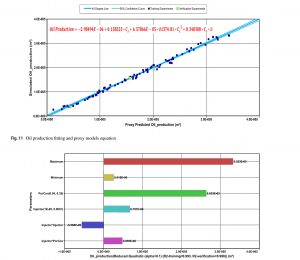Modelling of continuous surfactant flooding application for marginal oilfelds: a case study of Bentiu reservoir
CMG软件的应用情况
中文作者单位
-
马来西亚技术大学工程学院石油工程系
-
亚太大学工程学院
-
阿费巴博拉大学化学与石油工程系
-
纳扎尔巴耶夫大学矿业与地球科学学院
-
阿曼技术和应用科学大学
-
赛伯贾亚大学
Abstract
Enhanced oil recovery (EOR) is a proven method to increase oil production from the brown fields. One of the efficient EOR methods is injecting surfactants to release the trapped oil. However, few unconsolidated behaviours were observed in both field and laboratory practice. In this study, a new framework was adapted to evaluate the continuous surfactant flooding (CSF) in Bentiu reservoir. The study aims to quantify the expected range of the oil production, recovery factor and residual oil saturation (Sor). The motivation came from the oil demand in Sudan and the insufficient cores. The framework adopted in the study includes numerical simulation modelling and proxy modelling. Thirty-six cores obtained from the field were revised and grouped into five main groups. The interfacial tension (IFT) data were obtained experimentally. The CSF sensitivity study was developed by combining diferent experimental design sets to generate the proxy model. The CSF numerical simulation results showed around 30% additional oil recovery compared to waterfooding and approximately oil production between (20–30) cm3 . The generated proxy model extrapolated the results with concerning lower ranges of the input and showed an average P50 of oil production and recovery of 74% and 17 cm3 , respectively. Overall, the performance of CSF remained benefcial in vast range of input. Moreover, the generated proxy model gave an insight on the complexity of the interrelationship between the input factors and the observants with a qualitative prospective factors. Yet, the results confrmed the applicability of CSF in core scale with an insight for feld scale application.
Keywords: Continuous surfactant fooding · Response surface method · Proxy models · Permeability · Porosity · Bentiu reservoir



